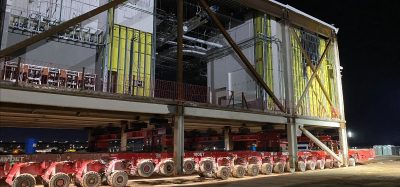Gen Z travellers have come of age, and airports are here for it
- Like
- Digg
- Del
- Tumblr
- VKontakte
- Buffer
- Love This
- Odnoklassniki
- Meneame
- Blogger
- Amazon
- Yahoo Mail
- Gmail
- AOL
- Newsvine
- HackerNews
- Evernote
- MySpace
- Mail.ru
- Viadeo
- Line
- Comments
- Yummly
- SMS
- Viber
- Telegram
- Subscribe
- Skype
- Facebook Messenger
- Kakao
- LiveJournal
- Yammer
- Edgar
- Fintel
- Mix
- Instapaper
- Copy Link
Posted: 20 November 2024 | Karen Mazurkewich | No comments yet
For Issue 3 2024, Karen Mazurkewich, Vice-President of Stakeholder Relations and Communications at Toronto Pearson International Airport (YYZ) described the shifts in global air travel that are taking place, driven by the rise of the tech-savvy, experience-seeking Gen Z.


As the global air travel industry continues its meteoric rebound, one demographic is rushing to the front of the plane: Gen Z.
Many young adults from this generation came of age during the pandemic, and their travel preferences and spending are now helping to reshape travel norms. With over half of Gen Z adults embracing frequent air travel according to Morning Consult Pro, their preferences are driving change across the industry.
Changing needs and demands
The pandemic was a watershed event – a stark ‘before and after’ moment for aviation. Now, as Gen Z travellers make up an increasingly significant portion of the passenger boom, their influence is driving a surge in demand for authentic experiences, sustainability and digital innovation. This shift isn’t just a passing trend but a fundamental industry recalibration in response to changing passenger needs.
In addition to being digitally native, Gen Z members around the world are politically activated. It’s common for members of the generation to leverage digital channels like social media to not only comment on travel disruptions, politics and climate impacts, but hold organisations, officials and individuals accountable for working against any progress. Even seemingly untouchable celebrities like Taylor Swift aren’t immune from Gen Z’s always-online carbon footprint accountability machine.
Why this matters: Unlike previous generations, Gen Z grew up online and in the midst of an accelerating climate crisis caused, in large part, by human society. While there’s more technology, healthcare and aviation connectivity than at any time in human history, there’s a finite timeline to reversing climate change with Gen Z, alpha and the following generations left holding the bag. They’re also the group of people making the most noise to demand change and correct course before it’s too late.
The boom in leisure travel
In parallel, the traditional landscape of corporate jet-setting has been profoundly altered by the rise of remote work and digital connectivity. Leisure air travel surged with a 6.6% annual growth rate from 2010 to 2019, while business air trips only grew by 3.3%. This gap has widened in the post-pandemic era, with leisure travel rebounding faster than business travel, particularly in the United States.
This tech-savvy generation demands efficiency and convenience”
These shifts have not gone unnoticed by new and existing airlines, which are recalibrating to cater to the wanderlust of young, experience-seeking travellers. The emergence of “bleisure” travel – blending business obligations with leisure time – underscores a broader trend toward seeking balance and enrichment in our journeys. From United Airlines offering discounts specifically for this cohort, to several airlines redoubling their commitment to net zero emissions, customer service and diversity, the industry is evolving to meet new demands driven, in large part, by a very vocal and online Gen Z.
Airports are also recalibrating their approaches, focusing on both the short-term and the future. Major aviation hubs across North America, including JFK, LAX, LaGuardia, O’Hare and Toronto Pearson, are adapting their offerings in ways that cater to Gen Z’s preferences.
Recalibrating facilities and destinations on offer
At Toronto Pearson, we recently unveiled Pearson LIFT, a 10-year investment plan to modernise, digitalise and expand Canada’s busiest airport. Not everyone realises how connected Pearson is – it has more international destinations and departures than any other North American airport and operates the world’s largest U.S. preclearance facility. In 2023, we served 44.8 million passengers on over 190 routes to 68 countries. Hubs like ours need to re-tool to meet the needs of a travel market that has shifted decisively.
One significant trend is the shift from business flights to holiday destinations like Paris and Las Vegas. To accommodate the leisure surge, we’ve worked with our airline and agency partners to drive operational efficiencies, ensure better on-time performance and create shorter wait times while focusing on the more seamless, innovative and sustainable travel experience young travellers expect. Our new infrastructure plan focuses on modernising assets to facilitate the future of travel, including wider taxiing lanes and investments in clean power generation for sustainability.
An appetite for technology
We’re also keenly aware of the digital solutions that have emerged to meet the expectations of Gen Z travellers. This tech-savvy generation demands efficiency and convenience, which is why we’re promoting apps like U.S. Customs and Border Protection’s Mobile Passport Control, plus YYZ Express (which allow travellers to pre-book security slots at our airport) and Advanced Declaration (which expedites Canadian customs procedures).
The pandemic’s challenges have spurred a wave of innovation and driven the industry toward a future where travel is about crafting unforgettable experiences. Gen Z travellers, with their digital fluency and desire for meaningful, personalised journeys, are at the forefront of this transformation. It’s the new normal, and it’s how the industry must adapt to meet the expectations of the next generation of travellers.
In Toronto and beyond, the future of air travel and airport modernisation needs to not only fold Gen Z’s demands into infrastructure-level work, but design and build for them.
About the author
Karen Mazurkewich is the Vice-President of Stakeholder Relations and Communications at Toronto Pearson and a former journalist with the Financial Post and The Wall Street Journal.



















